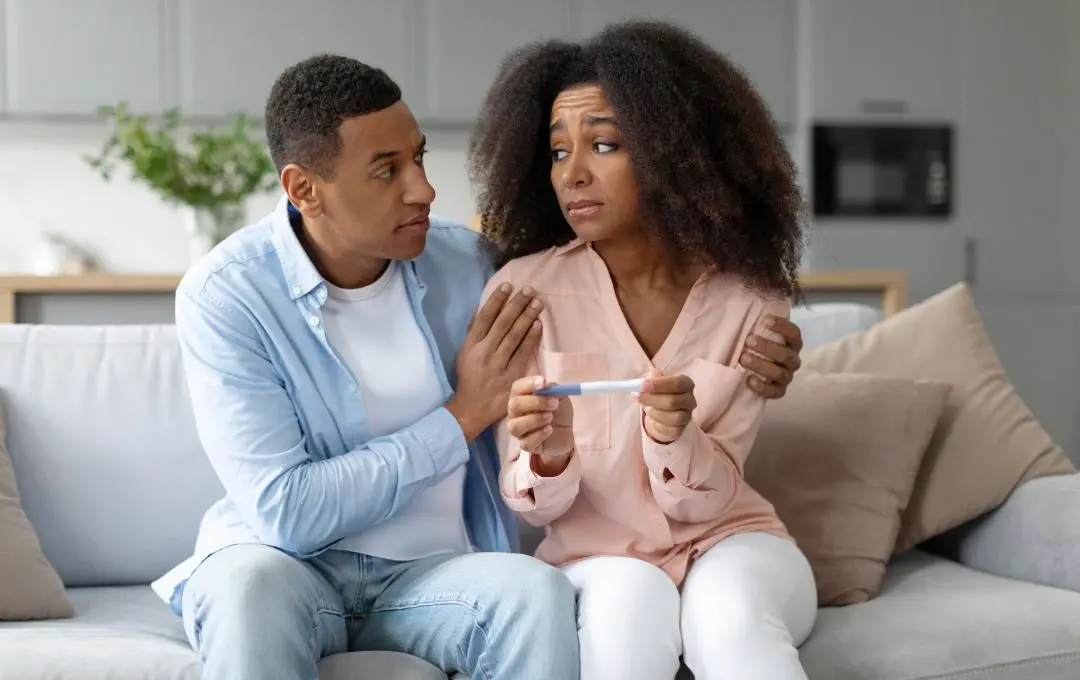
While not all fibroids impact fertility, their size and, critically, their location within the uterus are major determinants of potential interference with conception. Understanding the link between fibroids and infertility is important for managing anxieties and guiding informed treatment decisions.
For many women, a clear diagnosis and treatment plan can help them manage their symptoms and improve their chances of getting pregnant. At USA Fibroid Centers, our specialists recognize the prevalence of uterine fibroids and their potential impact on fertility. While many women with fibroids successfully conceive and have healthy pregnancies, we recognize the journey can come with challenges.
With advancements in medicine, tailored fibroid treatments can address many of the fibroid symptoms and risk factors, potentially improving chances of a successful pregnancy.
Watch Our Video to Learn More
What are Fibroids?
Fibroids are noncancerous tumors in and on the uterus. These benign growths are most common among women of reproductive age, with prevalence increasing notably in their 30s and 40s.
In addition to impacting fertility, fibroids can cause various symptoms such as:
- Painful cramps
- Heavy bleeding
- Anemia
- Bloating
- Constipation
- Incontinence
If your experiencing symptoms and wondering if fibroids may be affecting your fertility, take our symptoms quiz to learn more.
Which Fibroids Are More Likely to Impact Fertility?
Fibroids are classified by where they grow in or around the uterus. Some types are more like to interfere with fertility than others.
| Fibroid Type | Location | Impact on Fertility |
| Submucosal | Just beneath the uterine lining | Most likely to affect fertility by distorting the uterine cavity and preventing implantation. |
| Intramural | Within the uterine wall | Larger fibroids may alter the shape of the uterus or affect blood flow, potentially reducing fertility. |
| Pedunculated | On stalks; may be inside or outside uterus | If located inside the uterus, can interfere with implantation and affect conception. |
Other types, like subserosal or calcified fibroids, are less likely to impact fertility but may still cause symptoms that require treatment.
Knowing what type of fibroid you have can help determine how it may be affecting your fertility.
Connection Between Fibroid Size and Fertility
Size may also impact fertility, depending on where the fibroids are located and how many are present:
- Small (less than 3 cm): Typically does not affect fertility and may not require treatment.
- Medium (3–5 cm): May interfere with implantation or cause discomfort; sometimes monitored or treated.
- Large (greater than 5 cm): More likely to impact fertility by affecting the uterus’s shape or blocking the fallopian tubes.
- Multiple fibroids: Can contribute to fertility challenges, such as implantation issues or changes to the uterine lining.
How Fibroids Can Affect Fertility
Fibroids may interfere with conception or a healthy pregnancy by:
- Changing the shape of your cervix so fewer sperm can enter.
- Changing the shape of the uterus to block sperm or embryo movement.
- Blocking your fallopian tubes.
- Impacting the size of your uterine cavity lining.
- Reducing blood flow to the uterine cavity so an embryo cannot be implanted.
Diagnosing Fibroid-Related Infertility
Diagnosing potential fibroid-related infertility starts with consulting a fibroid specialist who can help determine how fibroids may be affecting your fertility. This typically includes tests like ultrasound, MRIs, and pelvic exams to assess fibroid size, location, and their impact on fertility. A specialist’s evaluation is important to get a clear diagnosis and explore the right treatment options for your situation.
Take the first step toward understanding your options and getting personalized care.
Treatment Options for Fibroids and Their Impact on Fertility
Navigating treatment for fibroids is critical, especially when considering the risks of fibroid surgery on fertility. How each procedure influences the ability to conceive and carry a pregnancy to term is crucial for informed decision-making.
Surgical Treatments for Fibroids
- Hysterectomy: This surgical procedure removes the uterus, permanently eliminating the ability to conceive or be pregnant. Hysterectomies require a length recovery period along with risks of early menopause due to hormonal imbalances.
- Myomectomy: A myomectomy removes fibroids from the uterine walls, leaving the uterus intact. There is potential for scarring and fibroid recurrence after a myomectomy. According to research studies, myomectomy postoperative adhesions significantly impact the ability to conceive.
- Acessa™ Procedure: This emerging technique offers minimally invasive alternatives to traditional surgical approaches, utilizing radiofrequency ablation to target fibroid tissue and typically involves two to three small incisions in the abdomen. Limited research exists on Acessa’s™ impact on fertility.
Non-Surgical Treatments to Preserve Fertility
- Uterine Fibroid Embolization (UFE): UFE is a minimally invasive procedure, and with its high success rate. According to the National Institute of Health, UFE is one of the most promising methods for treating fibroids while preserving fertility, making it a viable choice for many women hoping to conceive. During UFE, tiny particles are injected into the uterine artery, cutting off the fibroid’s blood supply so they shrink and get reabsorbed. The procedure effectively alleviates fibroids symptoms without the need for surgery. Most importantly, UFE leaves the uterus intact, preserving the ability to conceive and carry a pregnancy after treatment.
The choice of fibroid treatment ultimately depends on the size, number, and location of fibroids, age, and fertility goals. It is important to consult your doctor to understand the different treatments, the risks of fibroid surgery, and their impact on fertility.
CALL 855.615.2555 TO SCHEDULE YOUR CONSULTATION
Managing Fibroids for Fertility
Dealing with uterine fibroids and infertility can be challenging. However, there are ways to manage your condition and improve your chances of conceiving, such as:
| Talk to a Fibroid Specialist | Consult a healthcare provider specializing in fibroids and infertility for tailored advice. |
| Maintain a Healthy Lifestyle | A balanced diet, regular exercise and sufficient Vitamin D can improve fibroid symptoms and fertility outcomes. |
| Manage Stress | Finding healthy ways to manage stress can support both mental and reproductive health. |
| Track Symptoms | Keep track of fibroid symptoms and menstrual cycles to identify patterns and discuss with your doctor. |
Live-Changing Results: Patients’ Stories
USA Fibroid Centers have helped many women with fibroid treatment to start living a happy, healthier life and reduce the impact of uterine fibroids on infertility.
Yvette Foy was advised to have a hysterectomy due to fibroids, but she sought an alternation with UFE. Two years after the procedure, she gave birth to a healthy baby girl. “The fibroids were too big before, but UFE helped me get pregnant,” said Yvette.
Mardia discovered she was pregnant just seven months after UFE. “I’m grateful to Dr. Shiloh. Thanks to the surgery, I was able to get pregnant afterwards,” said Mardia.
Diana C. was told she needed a hysterectomy because of fibroids but opted for UFE instead. One year later, she had a baby girl. “Dr. Sheth listened to my goals and gave me hope. I’m now a mother and symptom-free,” said Diane.
These stories highlight the potential for pregnancy after UFE. If you’re considering treatment, our specialists are available to help you explore the best options for your fertility goals.
SCHEDULE AN APPOINTMENT WITH A SPECIALIST
Uterine Fibroids and Infertility FAQs
What are some tips for getting pregnant if you have fibroids?
- Consult a fibroid specialist to assess the size, location, and impact of the fibroids on fertility.
- Consider treatments like uterine fibroid embolization (UFE) to shrink fibroids and improve fertility.
- Maintain a healthy lifestyle with proper nutrition, regular exercise, and stress management.
- Track ovulation and have regular, timed intercourse.
Can fibroids get worse during pregnancy?
Yes, fibroids can grow during pregnancy due to increased hormone levels, potentially leading to complications such as preterm labor and cesarean delivery.
Can removing fibroids improve fertility?
In some cases, removing fibroids can improve fertility, especially if the fibroids were obstructing the fallopian tubes or affecting the shape of the uterus.
Do fibroids affect IVF success rates?
Fibroids can lower IVF success rates, especially if they impact the uterine cavity, but treatments like UFE or surgery may improve outcomes.
How long should I wait to try to get pregnant after fibroid treatment?
After treatments like UFE or surgery, it’s typically recommended to wait at least three to six months before trying to conceive to allow the uterus to heal properly. Always consult your doctor for personalized guidance.
Resources
1. Frontiers in Surgery Myomectomy in infertile women: More harm than good?
2. National Institute of Health Pregnancy and Success Rates After UFE.



